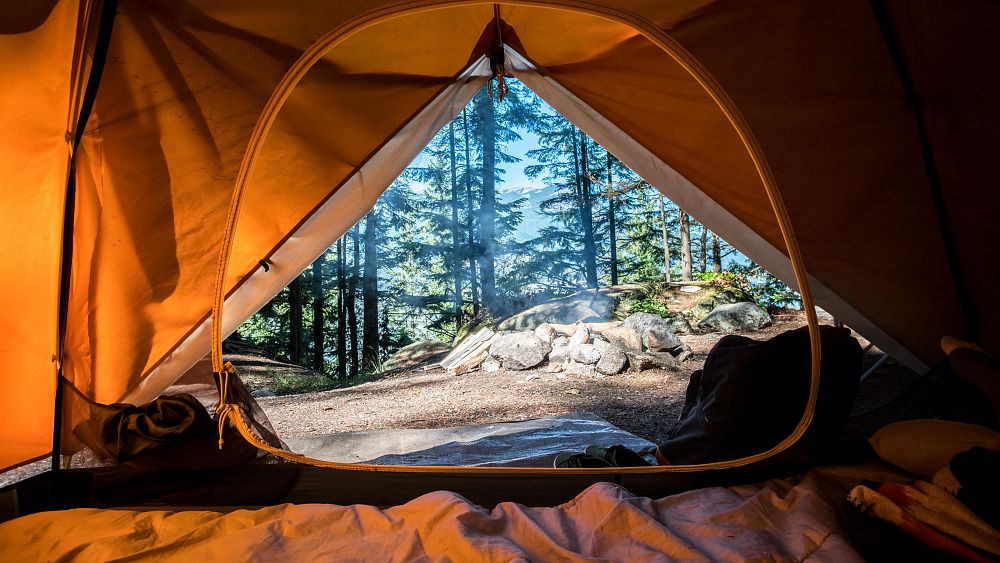For the adventurous camper, Europe is the perfect place to go wild.
Here are some of the most stunning wild camping spots and the laws you need to know.
Which European countries allow wild camping?
Before you grab your tent and head off into the wilderness, it’s important to ensure you don’t fall foul of the law.
Scotland is one of the best places in Europe for wild camping. Under the Land Reform Act of 2003, it is permitted almost anywhere with very few restrictions. Wild camping is also legal in Lithuania, Turkey and Finland.
In some countries, like Norway and Sweden, the practice is actively encouraged.
In many countries, however, it is illegal and the law is strictly enforced. Italy, Luxembourg and Malta are among those best to avoid.
Why you should go wild camping this summer
While paid campsites may offer luxuries like toilets and drinking water, wild camping is an unbeatable experience.
It is the perfect way to completely switch off and reconnect with nature. You can star gaze, listen to the sounds of trees and birds, and not be disturbed by noisy campsite neighbours. Plus, it’s free, a big bonus with prices being so high across Europe.
The best places for wild camping in Europe
Hebrides, Scotland: Explore pristine beaches untouched by tourism
Lying off the northwest coast of Scotland, the remote Hebrides islands are full of spectacular wild camping spots. The west coast of Harris is particularly stunning, with vast stretches of white sand and mesmerising views of the island of Taransay.
Wild camping is legal and the only restrictions are staying at least 100 metres from roads and not leaving behind any rubbish.
Lofoten islands, Norway: Sleep under the midnight sun
For an adventurous summer camping spot, head inside the Arctic Circle to the Lofoten islands. This is the ideal place to pull an all-nighter and bask in Norway’s midnight sun. The beaches and sandy dunes on the north coast of Moskenesøy are particularly attractive in summer.
Norway is very welcoming to wild campers. Under the 'Allemannsretten', the right of public access, wild camping for up to two nights is permitted on uncultivated land. This means you are free to camp in most places. The exception is land which is ploughed or being used for growing crops so have a look around for farms or farming equipment.
You also need to stay at least 150 metres from a house or cabin and remember to “leave no trace.”
Lahemaa National Park, Estonia: Camp in lush woods
This vast forested national park is well-known as a spot that welcomes wild campers. The National Forest Centre is very pro-camping and you can find spots with picnic tables and toilets dotted around the woods.
Estonia’s public access laws mean wild camping is permitted on government land and residents are usually very open to campers. However, camping is not allowed on cultivated land, and clothes and dishes must not be washed in rivers or lakes.
Campfires are also allowed, provided you use the designated firepits in forests and do not damage trees to obtain firewood. Campfires are not permitted where there is a fire hazard, such as in areas susceptible to wildfires or without sufficient fire breaks, or near structures built from combustible materials.
Kungsleden, Sweden: Hike through a vast nature reserve
The Kungsleden, or King’s Trail, stretches 440 kilometres across northern Sweden. The hiking route connects Abisko in the north to Hemavan in the south and runs through the Vindelfjällen Nature Reserve.
This is a great location for wild camping surrounded by the alpine tundra and birch forests. You might also come across wild animals like reindeer.
Sweden encourages wild camping with its right of public access. Campers can stay for up to two days in one place and campfires are permitted provided there aren’t fire restrictions in place. The Swedish Environmental Protection Agency reminds campers, however, to follow the motto “Don’t disturb - Don’t destroy.”
Dubysa River Valley, Lithuania: Meander among forests
The trail along Lithuania’s Dubysa River is a popular hiking route that passes through the highlands of East Samogitia, through picturesque villages and past corn fields in bloom. It makes for an enjoyable multi-day walking and wild camping trip.
Wild camping is both legal and encouraged in Lithuania. Just make sure you ask permission before staying on private property and avoid camping in urban areas or near houses.


